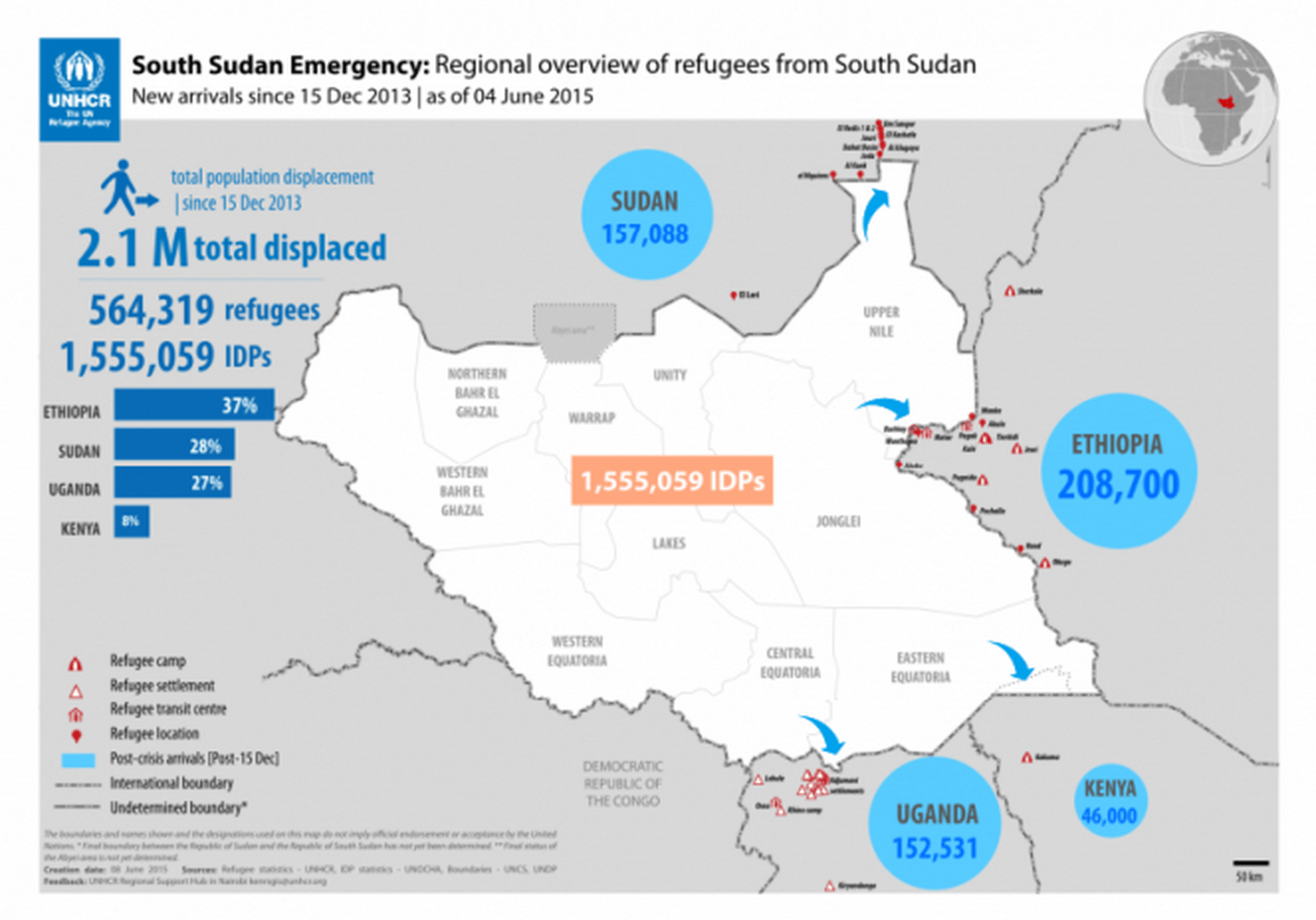This map, from the UN Office for the Coordination of Humanitarian Affairs, succinctly shows the number people displaced by fighting in South Sudan and where they have fled.


There is a deeper story to this map.
Over the last four weeks, fighting has intensified in South Sudan. Over 100,000 people have been displaced in this newest round of fighting. The prospect of mass starvation is very real. The International Committee for the Red Cross warned today that unless “urgent action” is taken, thousands of people may soon starve.
What is that ‘urgent action?’ Mostly, it’s securing more funding for the humanitarian relief effort. The ICRC needs an additional $23 million to provide food aid and help subsistence farmers make it through the lean season while also providing them seeds for the next planting season.
That money, though, is simply not materializing. Yesterday, UNICEF warned that it would have to shut down most of its operations in South Sudan by the end of the month because they are running out of money.
The acute needs of children in Sudan are huge and go far beyond the impact of the South Sudan crisis. More than 3.2 million children require humanitarian assistance. To date UNICEF in Sudan has received generous support from a wide range of donors. Unfortunately, the funding received covers only 16% of the 117 million USD required. By the end of June, UNICEF will no longer have funding available to support children affected by the war in South Sudan.
UNICEF and ICRC’s funding difficulties in South Sudan are symptomatic of a larger problem facing the international community. The world’s humanitarian system is on the brink of collapse right now, with several ongoing complex emergencies stretching donors and relief agencies thin. Between Iraq, Syria, Nepal, CAR and Mali these emergencies are essentially competing for the same donor dollars and donors have so far been unable or unwilling to fully fund the relief operations of each of these emergencies. Unless donors step up in a big way, it would seem that relief operations in South Sudan may be the next to fall.
